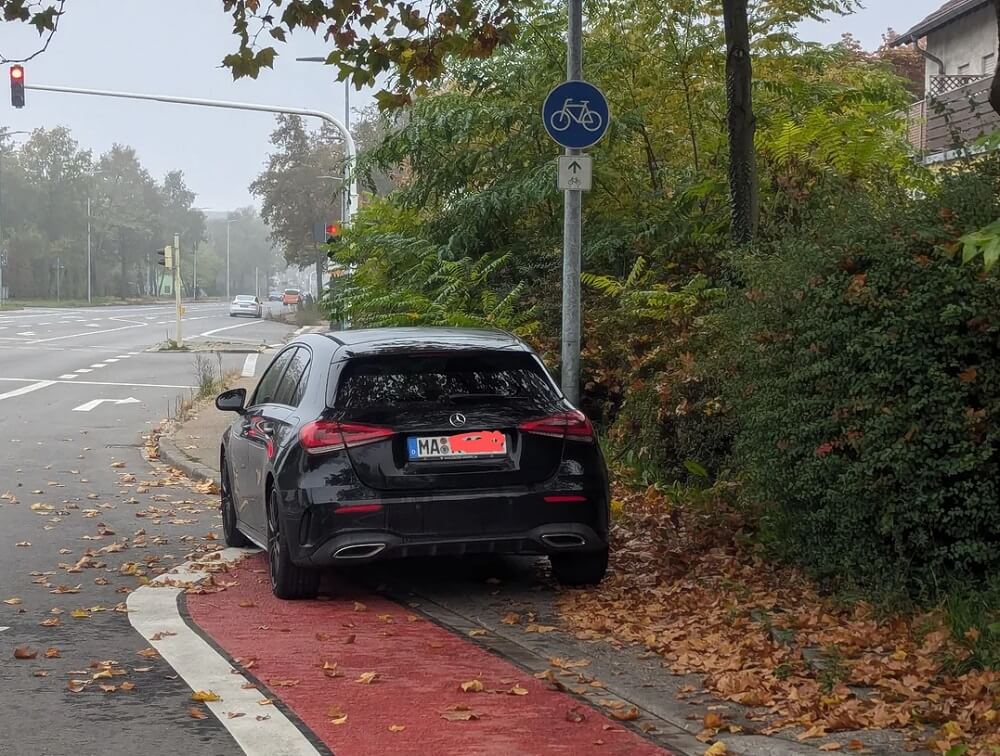A resident from a German-speaking country was shocked by one driver's thoughtless parking job that made the road dangerous for bikers and pedestrians alike.
In a community promoting reduced dependence on cars, a Redditor shared a photo originally posted in the r/Falschparker subreddit.

While the poster said they translated the image's caption, some things were clear regardless of the language: the vehicle is parked halfway on the sidewalk and halfway in the designated bike lane, obstructing the path for people exercising or commuting by bike or foot. According to the translation, the car was also parked only around 16 feet from the upcoming intersection.
The OP initially hoped to report the vehicle. Ultimately, it appears they received the help they needed in the original thread. However, commenters on the repost couldn't help but highlight why the driver's actions were so problematic.
"There appears to be a high risk of contact between handlebars and paintwork/mirrors when cyclists have to squeeze past that pole," one person wrote. "Unfortunate."
"I still remember the time when I nearly had a crash because a car was parked blocking an intersection for cyclists and pedestrians," someone else shared. "If there had been anyone behind me, when I braked, there would have been a high risk of being crashed into. After the second night of the car being parked there, I reported it to the police and it was towed."
When cars like the one seen in the photo park where they aren't supposed to, they do more than just increase risk for people choosing alternative modes of transportation.
Ultimately, they may also make people more hesitant to take advantage of walking and biking paths, which the U.S. Department of Transportation explains are a crucial part of promoting connectivity — a design concept that can "improve health by increasing access to health care, goods and services," and more.
And while electric vehicles are a greener and more wallet-friendly choice than gas-powered cars — in part because they don't spew toxic pollution from their tailpipes and generally require less maintenance — areas that are heavily dependent on cars can create an additional financial burden on families.
In January, Newsweek cited MarketWatch data that revealed American households need a minimum annual income of $100,000 to comfortably afford a car, according to standard budgeting advice. Biking to work only 10 days per month, on the other hand, can save someone around $150 per year — and adding more cycling days could increase those savings.
"In my city there's often a car on the biking lane every 100 to 500 meters. All the drivers probably think that they can do this," another person said. "But it's my little piece of the road! They already have bigger lanes, parking spots everywhere and much more space."
Join our free newsletter for easy tips to save more and waste less, and don't miss this cool list of easy ways to help yourself while helping the planet.









